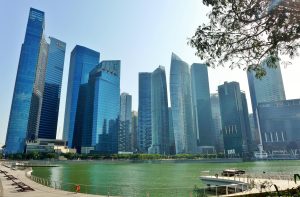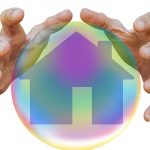Why real estate transparency is harder to achieve than ever
Transparency in commercial real estate markets has improved at its slowest pace in nearly a decade, at a time of rising expectations for higher standards.
Around 70 percent of the countries analyzed in a biannual study from JLL and LaSalle Investment Management showed progress in creating more transparent markets. Countries in Asia like India, Thailand and Vietnam made notable gains.
Overall, however, real estate transparency this year showed the weakest improvement since the period following the 2008 financial crisis.
Table of Contents
“The gold standard is more difficult than ever to achieve,” says Jeremy Kelly, lead director, global research at JLL. “But the real disconnect is in those countries that have shown reasonable improvement in previous years. They’re struggling to move up to the next level.”
For instance, South Africa, Mexico, Brazil and Turkey made significant improvements in recent years, introducing regulations that investors and business rely on as markers of transparency. But each of the countries slipped several places in JLL’s 2020 Global Transparency Index after having struggled to enforce them.
“After making big gains, these countries are treading water,” Kelly says. “To be highly transparent requires a broad diversification of measures and, crucially, the ability to enforce those regulations.”
A number of countries have seen their real estate transparency scores slip this year because of issues around corporate governance and the security of property rights.
Take Mexico, which introduced real estate investment trusts to its stock exchange in 2011. Optimism was high that public listings would reduce opacity and increase real estate transparency in the market.
By 2016 the country had 10 listed REITs. But investors have criticized its closely-controlled company boards, conflicts of interest, high fees, and anti-takeover measures.
Aside from enforcement, sustainability measures and technology are also levers that can increase real estate transparency.
In fact, with solid regulation and governance in place, the countries and cities committing to a lower carbon footprint and widespread adoption of tech are seeing the greatest transparency gains.
Technology and the promise of transparency progress
This year’s ranking shows early signs of correlation between transparency and the adoption of proptech – including areas like smart buildings, IoT, and big data – which has lagged in markets outside of the most transparent tiers.
Some less transparent countries that have embraced proptech, such as China and India, have improved their transparency scores and, in China’s case, leapfrogged to the transparent tier.
The power of proptech has been further reaffirmed during the COVID-19 pandemic. As companies send their staff back to work, they are actively seeking technologies that can ensure health and safety.
“In a period of disruption the need for transparency and trust has never been greater,” says Matthew McAuley, director, global research at JLL.
“We’ve really seen a confluence of proptech and concerns about ‘building health’ starting to take hold in the market and the impetus for technology to significantly impact real estate transparency is starting to gather pace.”
Since 2018, proptech has steadily attracted more funding, with nearly 1,400 tech start-ups focused on real estate founded and US$16.9 billion raised.
Health, wellness, and happiness: what next?
Where regulatory weakness has hampered progress in some markets, sustainability drives have steered improvements in others.
Pressure is mounting on the real estate industry to step up its climate change measures as more investors and corporates increasingly look at asset and city-level sustainability credentials to make decisions about where to invest or where to locate. Abu Dhabi, Costa Rica and Belgium are among the countries that made the biggest improvements this year after their governments implemented a range of new sustainability standards.
“In the future, measuring highly transparent markets in terms of healthy buildings and a resilient built environment will be even more fundamental,” says Kelly. He points to metrics such as health-and-wellness certification systems, building-resilience codes, net-zero carbon building frameworks and water efficiency standards.
“These new measures are what set those markets in the upper echelons of the ranking apart,” says Kelly, admitting that it’s becoming increasingly challenging for some countries and cities to move up. “For many mid-tier markets, the continual shift of what defines real estate transparency makes it more difficult to become highly transparent.
Looking further ahead, measuring the impact of buildings on wellness, which was already underway as an evolution of green building standards, is likely to make its way into the mainstream sustainability benchmarking as a result of COVID-19.
How the built environment responds to the social challenges of today such as inclusivity, diversity, and mental health could also become part of future metrics.
“We think we’ve covered everything,” says Kelly about the study that is now over 20 years old. “And then there’s always something new.”
 JLL’s biennale Global Real Estate Transparency Index illustrates that while transparency has made sizable gains regionally, there are new parameters at work in this sector. More work needs to be done to meet the changing expectations of investors and occupiers.
JLL’s biennale Global Real Estate Transparency Index illustrates that while transparency has made sizable gains regionally, there are new parameters at work in this sector. More work needs to be done to meet the changing expectations of investors and occupiers.
Singapore, Hong Kong and Japan all sit near the cusp of the “highly transparent” tier as they jockey for the title of Asia’s most transparent market.
Singapore has made the most progress over the past two years due to its strengths in government leadership on sustainability issues and its position as a regional hub for property technology (proptech) companies.
This development is especially encouraging in our view. Increasingly, heightened transparency will align with meeting higher expectations about the industry’s role in providing a sustainable and resilient built environment in the age of Covid-19.
A more in-depth focus on corporate social responsibility and a growing acknowledgment of the need to create a sustainable built environment bring environmental, social and governance (ESG) considerations into the sector’s mainstream. Singapore’s real estate market ticks these boxes.
Further afield, the adoption of voluntary sustainability measures has driven much of the improvement across South-east Asia, with green building certification systems now in use in most markets.
Equally important, energy efficiency standards for new or retrofitted buildings and energy benchmarking are common tools in higher-performing countries like Singapore.






